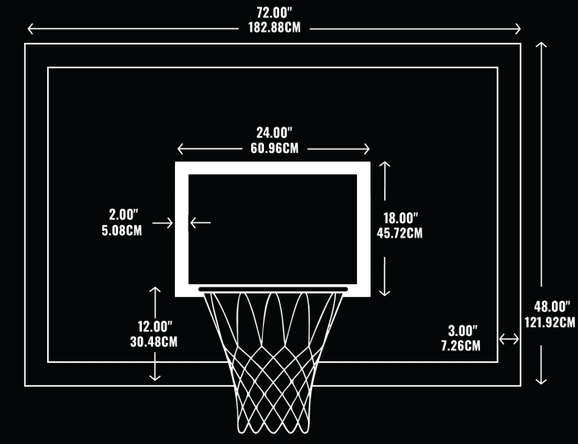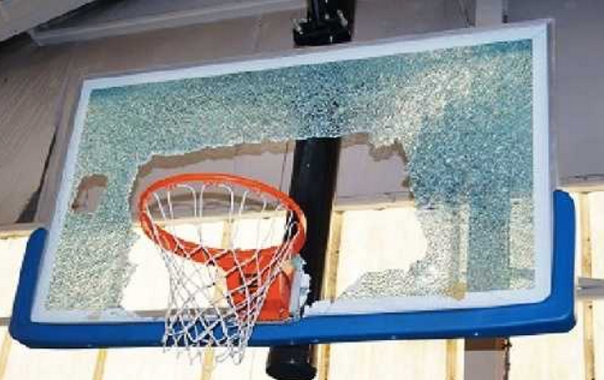Ah, the basketball backboard! My journey to understanding its dimensions and historical evolution wasn’t just enlightening, but it gave me an immense appreciation for the nuances of this game we all love. Let’s embark on this journey together, shall we?
The Dawn of the Backboard
The game of basketball, as envisioned by its inventor, Dr. James Naismith in 1891, didn’t originally include a backboard. Shocking, right? Players aimed at a simple peach basket. However, fans sitting in the balcony would interfere with shots, either blocking or redirecting the ball. This was the initial impetus for adding the backboard—to keep the peace and reduce interference. Interestingly, the original backboards were made of wire mesh before transitioning to wood.
Standardizing the Size
The size of the basketball backboard has seen its share of changes. Today, for professional games in NBA and other pro leagues, the universally accepted dimensions are 6 feet wide (72 inches) and 3.5 feet tall (42 inches). But it wasn’t always this standardized. In the early days, there were no specific regulations on size. Backboards were sometimes wider or shorter, leading to an unpredictable playing environment. Players had to adapt not just to opposing teams, but also to the very equipment they played on!

Why The Rectangle?
Have you ever wondered why the basketball backboard has its iconic rectangular shape? Early backboards were actually fan-shaped, which provided a different bounce and playstyle. But as the game evolved and standardized, the rectangle became the preferred choice, offering consistent ball behavior and harmonizing with the rectangular shape of the basketball court.

Materials and Evolution
The transformation from wire mesh to wood was just the beginning. Over time, as technology advanced, so did the materials used. In the late 20th century, tempered glass became the choice material, especially for professional leagues. This provided maximum transparency and durability, allowing spectators to see the action clearly. Plexiglass and acrylic followed, offering a shatter-resistant alternative, particularly for outdoor courts and recreational play.
Some Fun Remarks
- Signature Squares: You’ve seen that small square painted on the board, right? That square, 24 inches on each side, helps players aim their shots, especially bank shots. It’s an indispensable tool for mastering the art of shooting.
- Shattered Dreams: The iconic image of a player shattering the backboard with a powerful dunk isn’t just for commercials. It has happened in real games, leading manufacturers to improve design and safety features.
- “Board Meetings”: In the early days, the inconsistency in backboard sizes meant that players didn’t have “board meetings”; they had “board surprises.” Every court was a new adventure in geometry!
- Breakaway Rims: Ever hear about breakaway rims? They were introduced to prevent those backboard-shattering dunks. Before that, a slam dunk could lead to a “slam, oops!” moment.
- Wood You Believe It?: The original wooden backboards had a unique sound when the ball hit them. Players could essentially “knock on wood” for good luck every time they took a shot.
- Glass Slipper or Backboard?: Modern backboards made of glass are so pristine and clear, you’d think Cinderella might mistake one for her missing slipper!
- The Ultimate Bank: If you’ve perfected the bank shot, maybe you should consider a career in banking. After all, you’re already good at making deposits!
- A Transparent Thought: With the clear glass backboards in modern games, it’s like the board is saying, “Look, I have nothing to hide!”
- Historical Hoops: If Dr. Naismith saw today’s backboards, he’d probably say, “Well, that escalated quickly.” From peach baskets to this? Talk about an upgrade!

The basketball backboard isn’t just a necessary part; it’s a testament to the game’s evolution, adapting and refining as the sport grew in popularity and sophistication. From interference-laden beginnings to technological advancements, every inch and evolution of the backboard tells a story. And now, my dear reader, you’re part of that story, a witness to the rich tapestry of basketball’s history.
So, the next time you shoot a bank shot, take a moment to appreciate that board. It’s been through a lot!

